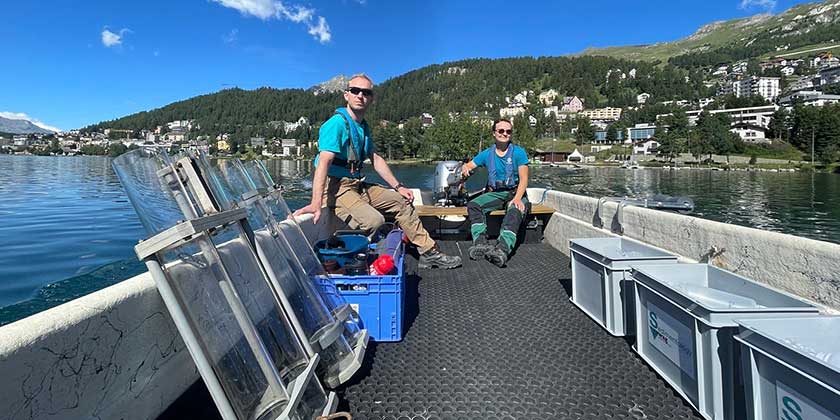Department Surface Waters - Research and Management
Isochrysidales bloom dynamics in Swiss lakes

Lakes are sensitive recorders of climate change and can provide high-quality and high-resolution sedimentary archives of continental paleoclimate. However, relatively few quantitative lacustrine temperature proxies exist. Past temperature reconstructions are crucial to understanding natural climate variability, particularly on the scale of decades to centuries.
Organic geochemical temperature proxies show potential as another means for reconstructing continental temperature. Haptophytes in the order Isochrysidales are the exclusive producers of long-chain carbon lipid molecules called alkenones that record changes in water temperature. The degree of saturation in alkenone lipids is increased in Isochrysidales that live at colder temperatures and lower salinities representative of many lacustrine and estuarine environments.
This proposal will focus on developing the long chain alkenone paleothermometer in Switzerland, including a thorough investigation of the spatial heterogeneity of Isochrysidales - the producers of alkenones - in Swiss lakes, a high temporal monitoring of the Isochrysidales spring bloom and associated alkenone production, and a comparison of the reconstructed paleotemperatures with meteorological data over the last 150 years to test the validity of the proxy.
Funding
Swiss National Science Foundation (SNF)




